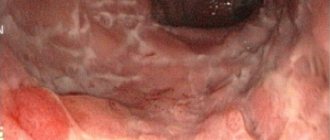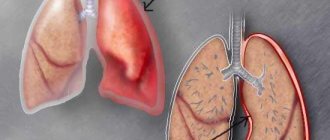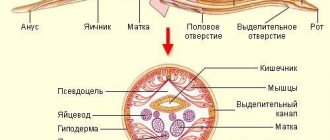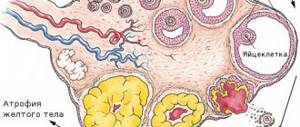Amyloidosis is a type of systemic disease that is accompanied by the deposition of amyloid in organs, which causes disruption of their functioning. The substance contains globular and fibrillar proteins associated with polysaccharides.
Kidney amyloidosis provokes organ dysfunction
The disease can affect the kidneys, digestive organs, musculoskeletal system, and skin surface. The pathology often affects older people.
Systemic amyloidosis - features
The disease belongs to the category of dysproteinoses, accompanied by disruptions of protein metabolism. The disease occurs in the event of a failure of the immune system, for this reason, to represent the essence of the disease processes occurring in the patient’s body, certain knowledge in the section of immunology and physiology is required.
Amyloid is a whole complex, including 95% fibrillar protein and 5% nucleoproteins of blood and cells.
Normally, amyloid protein is not formed in the body, but it is formed in the event of amyloidosis.
The appearance of pathology is characterized by:
- formation of amyloidoblasts. The first stage of the disease is accompanied by mutational changes occurring in different immune cells. Cells of the macrophage category, monocytes, and lymphocytes undergo mutation, transforming into a new type of cell - amyloidoblasts. With the development of pathology, their volumes grow, and they settle in various internal organs;
- synthesis of fibrillar protein in amyloidoblasts in the form of thin and elongated structures (filaments). They subsequently combine to form the basis of amyloid. Fibrillar protein is foreign to the body. Amyloidoblasts are surrounded by other cells that absorb and destroy their protein, preventing it from entering the body's tissues. The process can last for a long period (the latent stage of the disease), as a result, immunological tolerance is constantly created (the body’s adaptation to the new protein and the cessation of “protection” against it), which causes the entry of a large volume of fibrillar protein into the tissues.
- amyloid deposits in tissues. Amyloid is formed in the intercellular space after the combination of fibrillar protein with proteins and blood nucleoproteins. The relationship between substances is so strong that it cannot be destroyed. As a result, the formed amyloid accumulates in tissues, eventually displacing healthy cells.
In the case of certain forms of the disease, amyloidoblasts are able to transform into cells of other organs, which is accompanied by the manifestation of symptoms.
Classification of the disease
According to etiopathogenetic factors, types of renal amyloidosis are distinguished:
- idiopathic;
- family;
- acquired;
- senile;
- local;
- tumor-like.
Initial renal amyloidosis is caused by unexplored conditions and physiology of occurrence. The genetic type of the disease appears due to genetic disorders in the formation of filamentous proteins. Secondary renal amyloidosis is caused by a malfunction of the immune system.
There are several types of renal amyloidosis
The type of senile amyloidosis is caused by age-related changes in protein metabolic processes. The etiology of the local tumor type of the disease remains unclear.
Based on the type of filamentous protein formed by amyloid, the following categories are distinguished:
AA type – secondary, characterized by the presence of serum a-globulin;
AL-type – independent, amyloid includes simple lg chains;
ATTR type - hereditary, senile, amyloid contains a protein that transports thyroxine and retinol;
A2M type – dialysis, amyloid is saturated with β2-microglobulin.
Secondary renal amyloidosis is expressed as a worsening of the underlying disease.
Clinical picture of manifestation
Small amyloid deposits in excretory tissues, stroma, and vascular tissues do not create external signs. However, in the case of large accumulations of amyloid, organs undergo macroscopic modifications.
The clinical picture of the disease is diverse and depends on the manifestations and localization of amyloid deposits, its biochemical composition, duration of the disease, and the level of pathological changes in organs. The latent stage of amyloidosis is accompanied by microscopic protein deposits and the absence of symptoms.
The disease is accompanied by renal manifestations, providing a variety of symptoms.
In the initial stages the disease is asymptomatic
Renal amyloidosis is divided into 4 stages:
- latent;
- proteinuric;
- nephrotic;
- azotemic.
The initial form is asymptomatic. At this time, signs of the underlying illness (infections, inflammatory processes, pathologies of the rheumatic type) prevail. The duration of the stage is up to five years or more.
The proteinuric stage is accompanied by an increasing loss of protein in the urine, hematuria, leukocyturia, and an increase in ESR. Due to sclerotic processes in neurons, failure of lymphatic drainage and increased blood flow, the kidneys become voluminous, dense, and take on a matte, dull pink color.
The nephrotic stage is accompanied by sclerosis of the kidney lining, resulting in the formation of a nephrotic disease with the main symptoms in the form of proteinuria, increased cholesterol levels, and swelling that is resistant to diuretics. In certain cases, elevated blood pressure is observed. The disease is accompanied by normal or low blood pressure. There is an increase in the size of the liver and spleen.
The azotemic stage is characterized by wrinkling, density and a decrease in volume. The form is accompanied by impaired renal function, swelling becomes stable. Renal amyloidosis is aggravated by the formation of blood clots in the kidney canals, the pathology of anuria and painful sensations.
The standard signs of amyloidosis are: rotation of surrounding objects, a feeling of powerlessness, difficulty breathing, irregular heart rhythm, anemia.
Main symptoms
The accumulation of amyloid in the renal parenchyma is complicated by organ damage and functional failure. Symptoms of renal amyloidosis, regardless of the form, are combined with standard symptoms of kidney disease (pain, urinary disturbances, intoxication, etc.). More often, manifestations of pathology are absent until the onset of the acute phase of renal failure.
Primary renal amyloidosis occurs in people under 40 years of age, progresses rapidly, and often ends in death. The secondary type is diagnosed in people aged about 60 years and is accompanied by symptoms of the diseases that caused amyloidosis. There are stages of renal amyloidosis, which describe the symptoms of the disease according to the level of its development.
Preclinical (latent) stage
The accumulation of amyloid is not critical; renal functional impairment is not observed. The symptoms of the pathology coincide with the symptoms of pathologies that lead to the accumulation of insoluble protein. These include functional disorders of the lungs due to tuberculosis, bone damage due to osteomyelitis or arthritis, etc. It is not possible to diagnose deviations from the norm using hardware examination (MRI, X-ray). The duration of the stage is no more than 5 years.
Signs of the protoinuric (albuminuric) stage
The accumulation of amyloid in the kidney parenchyma reaches a level at which its permeability increases and protein from the blood enters the urine. This is detected using a laboratory urine test during routine medical examinations. The protein in the urine gradually increases, because the process of kidney damage cannot be reversed, the condition gradually worsens. The development period of the stage is about 10−15 years.
Clinical picture at the nephrotic (edematous) stage
There are pronounced symptoms. The level of protein in the blood is reduced due to its active excretion in the urine. There is a sharp weight loss, the patient complains of loss of strength, nausea, and thirst. Appetite worsens. A decrease in blood pressure with a sharp change in body position from horizontal to vertical provokes fainting. Amyloid accumulated in the intestinal tissues affects the nerve endings, causing diarrhea. Edema appears and progresses. The legs and face immediately swell, then shortness of breath appears as fluid collects in the lungs. There are also accumulations of fluid in the pleura and in the pericardium (the sac around the heart). Urination is impaired, up to complete absence. As a result of amyloid accumulation, the liver, spleen, and lymph nodes become enlarged.
Symptoms of the uremic (azothermic, terminal) stage of amyloidosis
Final stage. Kidney amyloid does not allow organs to function; they become modified. Renal failure is detected. Severe swelling, intoxication, fever, and lack of urination are observed. Blood pressure is low, pulse is weak. Hemodialysis (hardware blood purification) is recommended. Unfortunately, this does not allow the body to completely rid the body of amyloid. There is a high probability of death, since a number of vital organs are also affected.
Why does the disease occur?
The etiology of developing amyloidosis remains unclear. The secondary form of the disease refers to pathological abscesses, pathologies of an autoimmune nature, and cancerous tumors.
The condition for the dialysis type of amyloidosis is that the patient undergoes hemodialysis. Familial amyloidosis is common in the population of Mediterranean countries. Senile amyloidosis is the result of age-related changes in people over 80. The emergence of local forms of the disease is facilitated by oncology of endocrine organs, Alzheimer's disease, type II diabetes mellitus, and other ailments.
The cause of developing amyloidosis remains unclear
The list of hypotheses for the origin of renal amyloidosis includes an immunological, mutational hypothesis and the development of local cellular synthesis. Renal amyloidosis is accompanied by extracellular accumulation of amyloid in the kidney tissues with increased levels of insoluble fibrillar protein.
What causes amyloid deposition in the kidneys?
With certain metabolic disorders related to protein metabolism, insoluble high-molecular complexes are formed in the body, deposited in many organs.
In certain metabolic disorders related to protein metabolism, insoluble high-molecular complexes are formed in the body, deposited in many organs. Typically, amyloid protein begins to deposit in the renal brain tissue, which leads to the formation of renal amyloidosis. Other organs where abnormal protein complexes are commonly deposited include the liver, blood vessels, stomach, and peripheral nervous tissue.
Settling in the kidneys, amyloid fills the glomeruli, tubules and interstitial tissue of the medulla of the excretory organs, ultimately leading to impaired functionality up to complete renal failure. The structure of pathological protein complexes depends on the nature of their origin, which differs in different types of renal amyloidosis. Depending on the mechanism of amyloid formation and the diseases that provoke the occurrence of pathology, these types of kidney disease are distinguished.
- Renal amyloidosis (AL) primary type. A rare disease with unknown etiology. Occurs suddenly without specific reasons. Primary amyloidosis is often called myeloma, which is characterized by the formation in the blood of insoluble complexes based on immunoglobulins, which are deposited systemically in the body, including in the kidneys.
- Secondary amyloidosis (AA) occurs against the background of severe chronic infections (tuberculosis, specific inflammation of the large intestine), and cancer. The basis for the formation of amyloid in the secondary form of pathology is alpha globulin, which is produced by the liver in response to chronic painful processes in the body. It is believed that the reason that an insoluble form is produced instead of a normal immune protein is genetic disorders that predetermine the formation of pathological protein molecules.
- A specific form of amyloidosis (AM) is the formation of abnormal insoluble protein in patients forced to undergo hemodialysis. In some patients, the concentration in the blood of certain protein molecules increases, which bind to nucleoproteins, forming insoluble complexes that settle in the kidneys and other organs. Renal amyloidosis, which occurs as a consequence of hemodialysis, significantly aggravates the already impaired function of the excretory organs, worsening the prognosis.
In addition, there are such forms of amyloidosis as senile, which occurs as a result of age-related changes in the body, and tumor, which accompanies the development of some malignant neoplasms.
Diagnosis of amyloidosis
Suspicions about the presence of the disease may appear based on symptoms, however, establishing a diagnosis requires auxiliary research. Research in the laboratory is accompanied by changes:
- blood tests reflect a steady and increasing ESR, starting from the primary stages of the disease. During the formation of renal pathology, the level of hemoglobin and the level of red blood cells decrease. The growth of platelets indicates a connection to the pathogenic pathology of the spleen;
- results of biochemical blood tests. In the nephrotic stage, the disease is manifested by a reduction in the volume of protein, including albumin, and an increase in cholesterol and low-density lipoproteins. Electrophoresis allows you to isolate damaged insoluble protein from blood fluid;
- A study of urine in the proteinuric stage of the disease determines the presence of a large volume of protein. Immunoelectrophoresis allows us to detect the presence of Bance-Jones protein, characteristic of AL amyloidosis in myeloma syndrome.
A more accurate diagnosis is provided by a renal tissue biopsy. During the examination, genetic typing of amyloid is likely to determine subsequent treatment. The functional state of the kidneys can be assessed using ultrasound, gastroscopy, and sigmoidoscopy.
Nephrotic stage
In the nephrotic stage of amyloidosis, weakness, loss of appetite, nausea, dry mouth, thirst, and weight loss are noted. Such external manifestations are due to the low protein content in the blood and its massive excretion in the urine. This stage is characterized by sclerosis and amyloidosis of the renal medulla, resulting in hypercholesterolemia (an increase in the amount of cholesterol and fats in the blood), massive proteinuria, hypoproteinemia (massive loss of protein compounds in the urine, leading to a decrease in their concentration in the blood). Edema resistant to diuretics is also observed. Hypertension may be present, but most often the blood pressure remains normal or may fall. Splenomegaly and hepatomegaly (enlarged spleen and liver) are common.
Treatment of renal amyloidosis
Therapy of the disease is based on reducing the formation of pathogenic protein and protecting the kidneys from its influence. Glucocorticoid hormones and cytostatic medications are used. Therapy for secondary amyloidosis involves treating the underlying disease.
4-aminoquinoline drugs, antiallergenic drugs and antihypertensive drugs are prescribed. The rationality of using corticosteroids as anticancer drugs is under debate. Terminal renal amyloidosis may require ongoing use of kidney dialysis or a kidney transplant.
If amyloidosis occurs, treatment is accompanied by the use of multivitamins, diuretics, and plasma transfusions. For loose stool syndrome, astringents are prescribed. Renal amyloidosis is accompanied by a regimen identical to chronic glomerulonephritis.
Patients with renal amyloidosis are prescribed a change of diet - it is necessary to consume raw liver (about 100 g per day) for a long time (over two years), limit protein and table salt, and eat foods containing many vitamins and potassium salts.
Forecast
The course of the disease amyloidosis of the kidneys, symptoms, complications that arise, and the rate of progression often determine the prognosis of the pathology. Significantly worsening the condition of patients is thrombosis, hemorrhages, age characteristics, individual health indicators, and the addition of infections.
For example, if, against the background of progressive renal pathology, renal failure or heart failure develops, then the patient can live in this condition for about a year. In order for the treatment of kidney amyloidosis to be effective and bring good results, you need to go to the hospital in a timely manner, at the first symptoms. A doctor dealing with such issues (nephrologist) will be able to diagnose the form of the disease at an early stage of the development of the pathology, prescribe the correct treatment, which cannot be refused, and the disease will be completely cured.
Disease prognosis
The development of renal amyloidosis is determined by the course of the underlying pathology and the rate of development of the disease. The prognosis is aggravated by the occurrence of thrombosis, bleeding, the addition of random infections, and the patient’s advanced age.
If kidney failure develops, survival is limited to a year. Recovery is determined by a timely visit to a nephrologist and early diagnosis of the disease, intensive therapy and the absolute elimination of pathology.
There will be complications of amyloidosis:
- diabetes;
- liver dysfunction;
- hemorrhages of the gastrointestinal tract;
- kidney failure;
- peptic ulcers of the esophagus and stomach;
- chronic cardiac dysfunction.
Life expectancy for this disease increases after hemodialysis
The development of complications provokes a worsening prognosis. After the onset of symptoms of cardiac pathologies, the average life expectancy does not exceed a couple of months. In cases of chronic kidney failure, patients live for about a year.
The duration increases after hemodialysis. The prognosis of the secondary type of pathology is determined by the prospects for treating the disease. Elderly patients are affected by severe amyloidosis.
Causes
Acquired amyloidosis is provoked by syphilis, tuberculosis, and other infectious diseases. Arthritis, pleural empyema, ulcerative colitis, kidney cancer. Gradually affects blood vessels, lymph nodes, and liver.
The idiopathic form of the pathology remains largely unstudied; it is believed that multiple myelomas can provoke the disease, resulting in damage to the skin, thyroid gland, kidneys, changes in the condition of the liver, pulmonary and cardiac pathologies, and damage to the spleen. The familial form is transmitted by hereditary factors. Senile as a result of age-related characteristics of the body. The dialysis form is provoked by long-term hemodialysis; local pathology develops against the background of malignant growths, malfunctions of the endocrine system, and Alzheimer's disease.












